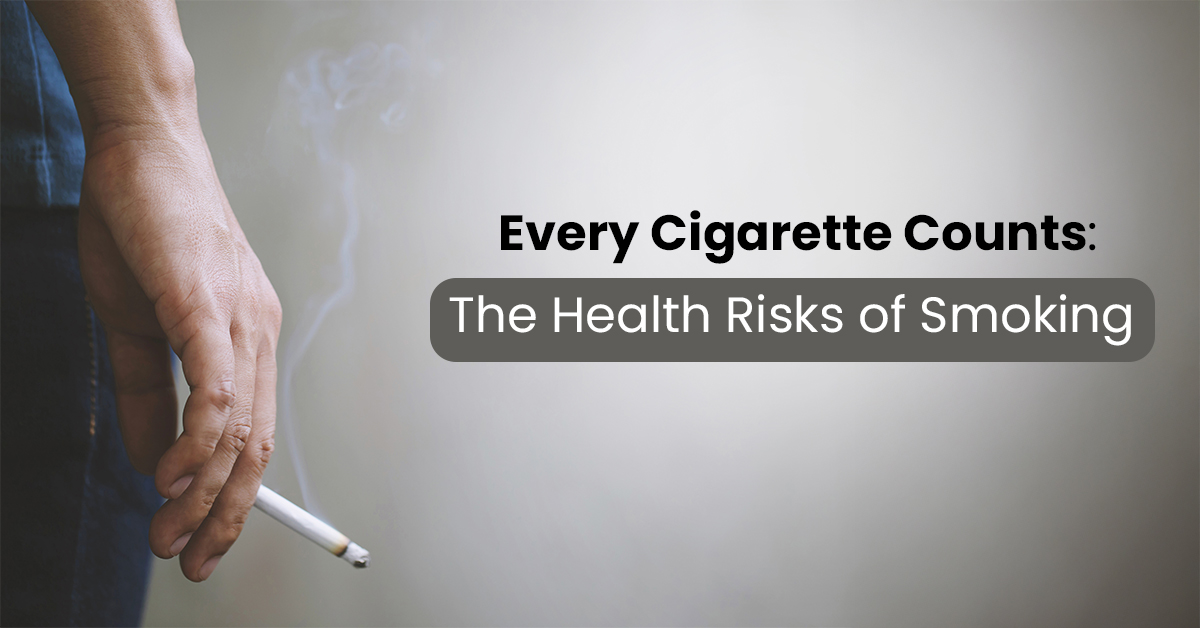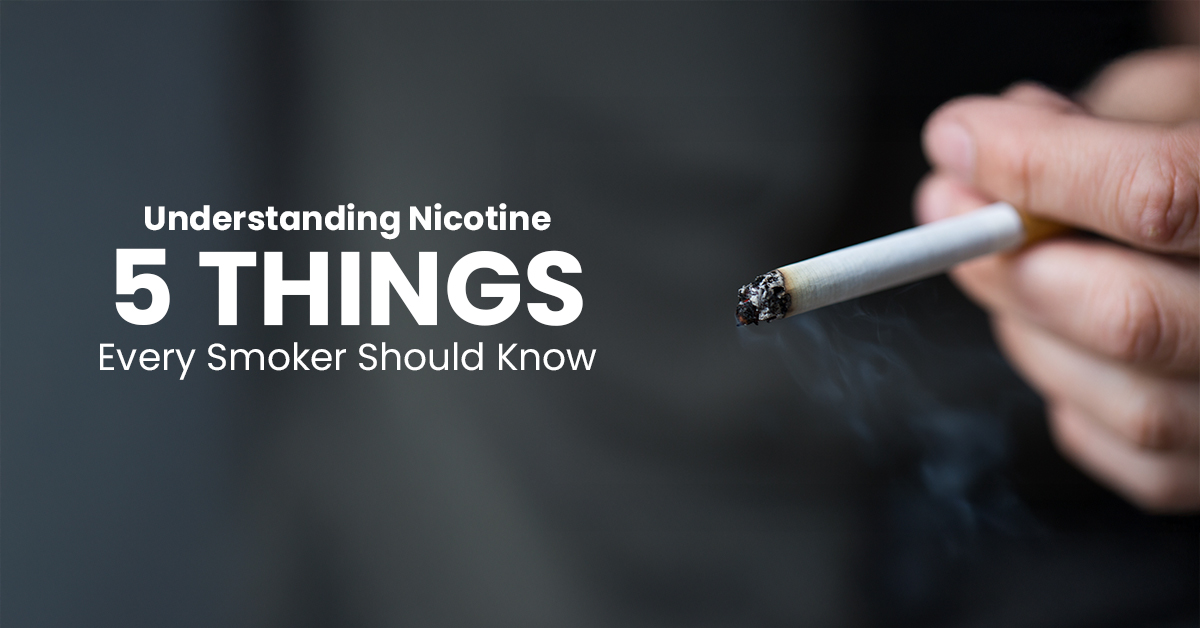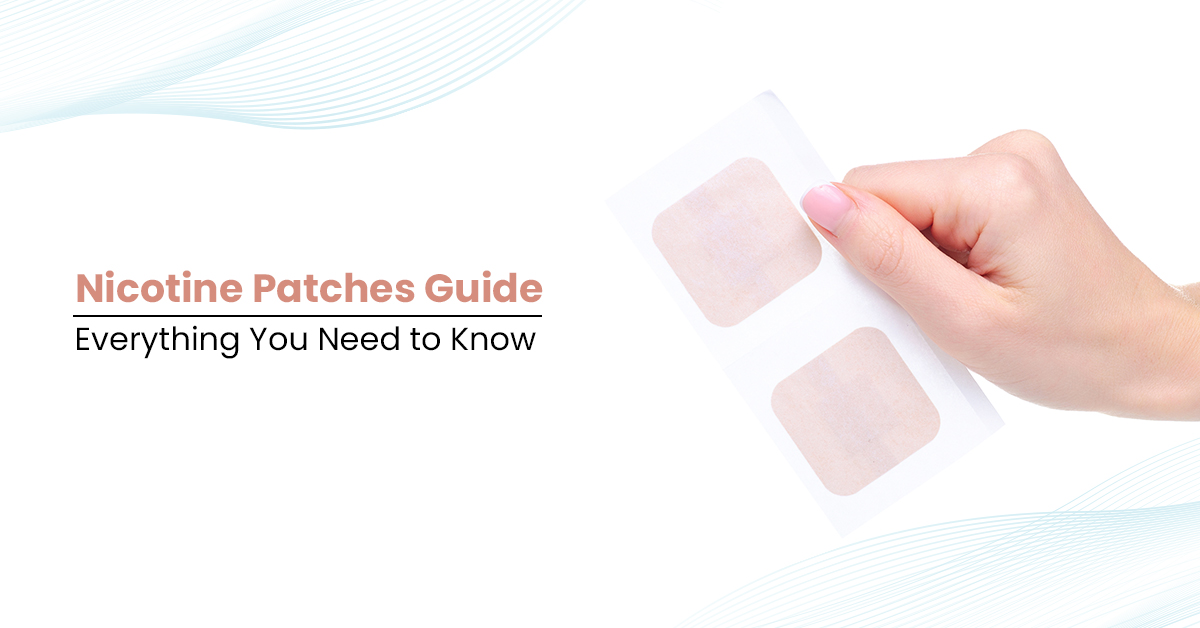Table of Contents
More from Blog
26 Nov, 2025
14 Nov, 2025
21 Sep, 2025
16 Sep, 2025
Every Cigarette Counts: The Health Risks of Smoking
24 Sep, 2025
6 Minutes to read

What's Inside a Cigarette? (Composition)
We all know smoking is harmful-but have you ever thought about what's really in that single puff that quietly takes control of us? A cigarette may seem like just “tobacco rolled in paper,” but in reality, it's a chemical cocktail- having the power to addict you, affect your health, and quietly harm your body over time. Cigarettes have around 600 ingredients that produce over 7,000 chemicals when burned-at least 69 of which can cause cancer. Before we dive deeper into how smoking affects your lungs and heart, it's important to understand what's in a cigarette.
Some of the most harmful substances include:
- Nicotine - You've probably heard the name, but do you know what it really is? Nicotine is highly addictive; affects your brain and makes you crave the next puff almost automatically.
- Tar-A thick, black residue that builds up in the lungs, making breathing difficult and increasing the risk of respiratory infections and other lung-related illnesses.
- Carbon monoxide - the same gas found in car exhaust. In cigarette smoke, it's poisonous, cutting the oxygen in your blood and forcing your heart to work harder.
- Heavy metals (lead, arsenic, cadmium) - these toxic substances in cigarette smoke gradually damage your bones, kidneys, and nerves, often without obvious signs at first.
- Carcinogens - every puff exposes you to over 70 cancer-causing chemicals, quietly putting your health and your life at risk.
Cigarettes don't just provide a temporary escape-they act as a slow-acting poison, quietly harming your organs and weakening your heart, lungs, bones, and immune system, while increasing your long-term risk of lung cancer, heart disease, stroke.
The Health Risks of Smoking
When you think of smoking, lung cancer might be the first thing that comes to mind-but the risks go much further. Smoking also causes chronic respiratory problems like COPD, emphysema, and bronchitis, along with many smoking-related diseases. The damage doesn't happen overnight-it builds silently, puff by puff, day by day.
Let's see how smoking harms two of your most vital organs: the lungs and the heart.
Every Puff Counts: The Link Between Smoking and Lung Cancer
Smoking is the leading cause of lung cancer, accounting for nearly 80% of cases. Each cigarette delivers hundreds of cancer-causing chemicals straight to your lungs, harming cells and DNA long before symptoms appear. But the danger doesn't stop there, smoking also raises the risk of cancers in your mouth, throat, esophagus, bladder, and pancreas.
Key points:
- Persistent coughing, wheezing, or shortness of breath is your lungs signaling stress.
- Smoking is the top cause of lung cancer, responsible for nearly 80% of cases.
- Quitting can reduce your risk and give your lungs a chance to recover.
Smoking and Your Heart: The Silent Strain
Cigarette smoke doesn't just irritate your lungs-it quietly targets your heart. Every chemical you inhale narrows blood vessels, raises blood pressure, and forces your heart to work overtime. The effects are often invisible at first, but over time, they can lead to serious conditions like heart disease, heart attacks, and strokes.
Not a Smoker? You're Still at Risk- Secondhand smoking (Passive Smoking)
Think you're safe because you don't smoke? Think again. Secondhand smoke is a mix of what a smoker exhales and the smoke from the burning cigarette, packed with harmful chemicals that can quietly harm anyone nearby.
Research shows that nonsmokers exposed to secondhand smoke have a 20-30% higher risk of developing lung cancer and nearly 34,000 heart disease deaths annually in the U.S. alone. Even brief exposure can harm blood vessels and increase the risk of heart attack.
Key points:
- Can trigger asthma, bronchitis, and lung cancer in non-smokers.
- Children face ear infections, wheezing, and sudden infant death syndrome
- Pregnant women are at high risk of low birth weight and preterm delivery.
So, Take a breath of safety-limit exposure to secondhand smoke today.
Risks of smoking for youth
For many young people, smoking begins innocently, a cigarette shared with friends, a way to “fit in,” or a moment of social enjoyment. But what starts as a casual experiment quickly becomes a trap. Ideally, nicotine isn't a choice; over time, it quickly takes hold, creating dependency and making it hard to quit before adulthood. This leads to real consequences: weaker lungs, increased risk of heart disease, reduced athletic performance, and even long-term illnesses like cancer.
The solution is simple: awareness and support. Turn to sports such as running, swimming, team games or hobbies that energize and uplift you, not habits that harm. Surround yourself with friends who inspire, and let families, schools, and communities guide you to stay strong.
The Benefits of Quitting:
Quitting isn't just a decision, it's the start of your body's journey to heal, recover, and regain strength. From your heart to your lungs, every smoke-free moment brings real, measurable health improvements.
The good news? The body begins to heal as soon as you stop:
- 20 minutes later: Heart rate and blood pressure drop.
- 12 hours later: Carbon monoxide leaves the blood.
- 2-12 weeks later: Circulation improves, breathing feels lighter.
- 1 year later: Heart disease risk is cut in half.
- 10 years later: Lung cancer risk drops by 50%.
Quitting smoking is the single most powerful health choice you can make.
Effective Ways to Quit Smoking:
Quitting smoking can be challenging, but the right support and strategies make it achievable. From behavioral therapies and support groups to medically approved aids like nicotine patches, gums, and lozenges, there are multiple ways to manage cravings and reduce withdrawal symptoms.
- Nicotine replacement therapy (patches, gums, lozenges): reduces cravings.
- Prescription Medicines: Medications such as bupropion and varenicline help you manage cravings.
- Behavioral support: counseling, helplines, and group therapy.
- Digital tools: quit-smoking apps track progress and savings.
- Healthy alternatives: exercise, deep breathing, and mindfulness ease withdrawal.
Key Takeaways:
From the chemicals inside a cigarette to the risks for your lungs, heart, and even those around you, smoking quietly harms. The good news? Every cigarette avoided, every healthy habit chosen, is a step toward strength, freedom, and a life in control. For those ready to quit, our nicotine patches help ease cravings and reclaim every breath. At Patch Mantra, we make quitting simpler-one step at a time. Choose wisely. Choose life.
Every cigarette counts-but so does every decision to quit.




